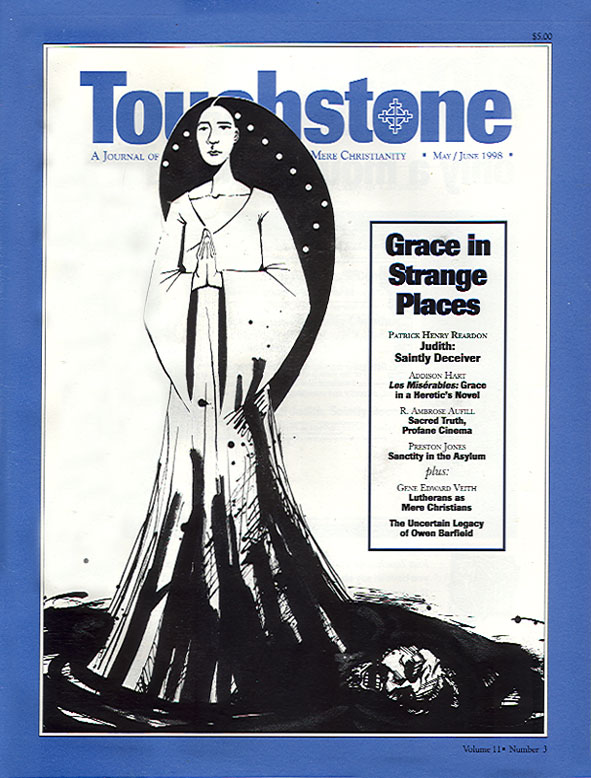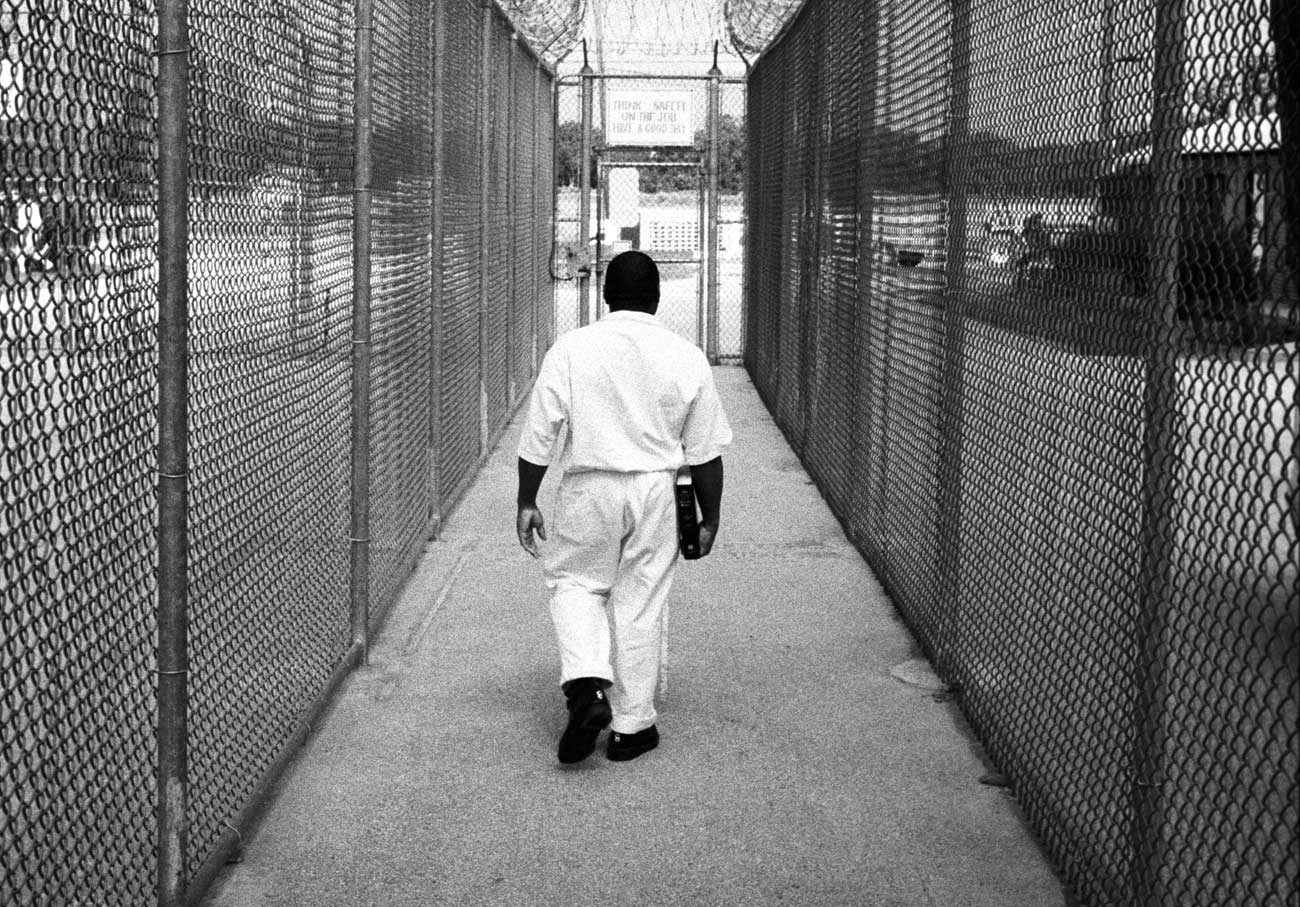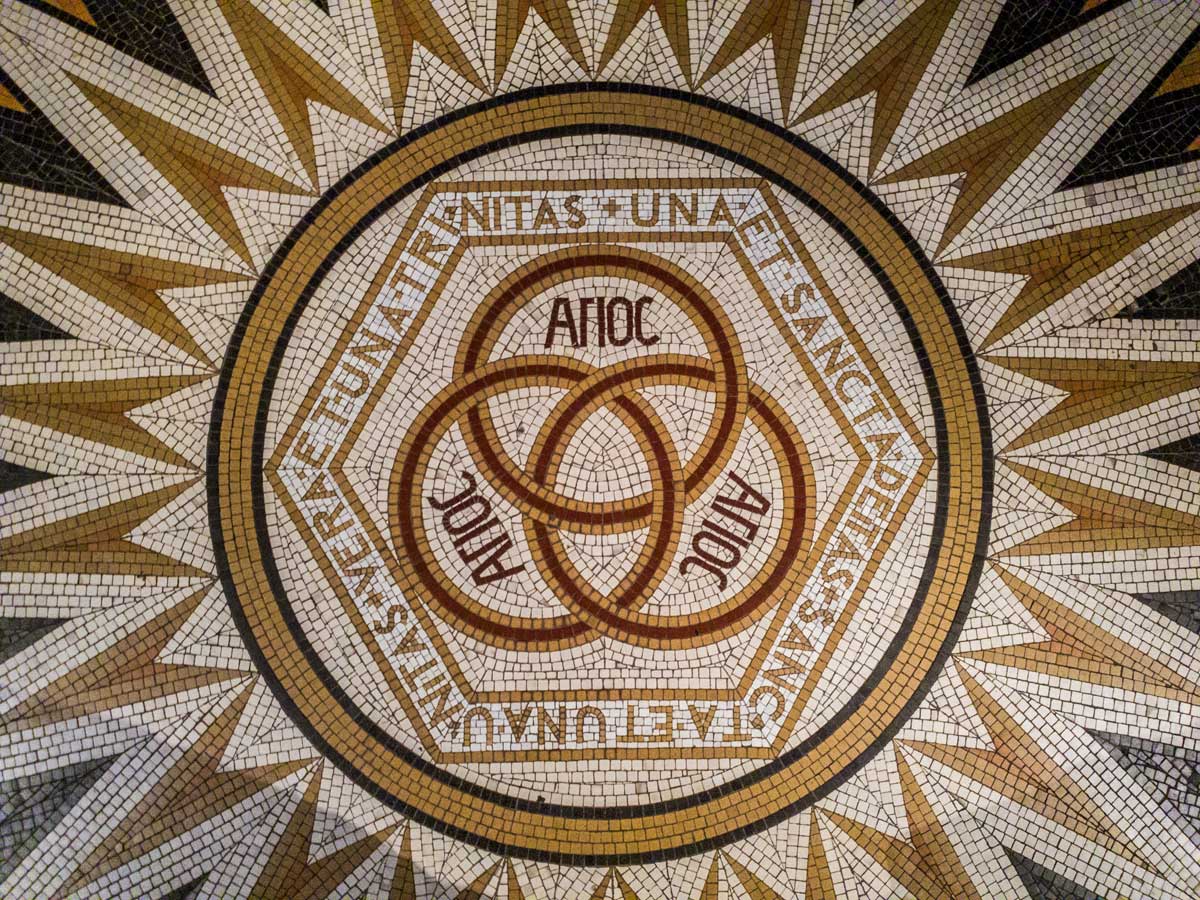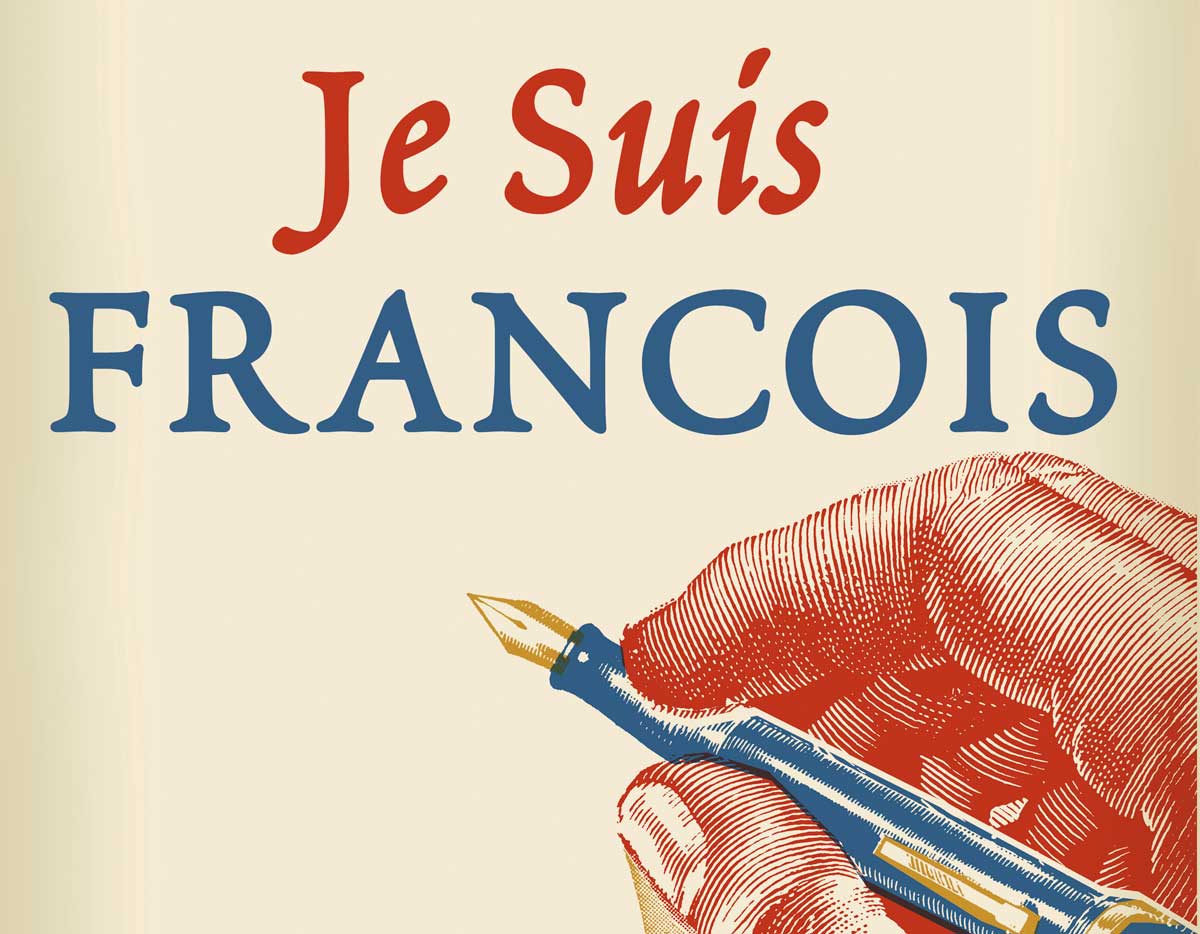Sacred Truth, Profane Cinema
Another Look at the Film Priest
by R. Ambrose Aufill
“The right perception of any matter and a misunderstanding of the same matter do not wholly exclude each other.”
—the Priest in Franz Kafka’s The Trial
When it was released in 1995, the movie Priest deeply offended many Catholics because of its sexual content and because of its thoroughly unflattering portrayal of the Catholic priesthood. Of the five clerical characters in the film, three are immoral or pathological in some way, and the other two are simply mean and heartless. Given such objectionable elements, it is not surprising that many of the Catholic faithful were deeply offended and saw the film as yet another attack on the Church and on Catholic tradition and morality.
The detractors of the film have raised the issue of the relation between public morality and artistic freedom, especially as regards the portrayal of religion and sacred figures. Vatican Council II also addressed this matter in the Decree on the Means of Social Communication, which says:
[This] question bears on the relation between the rights of art—to use a current expression—and the moral law. The controversies to which this problem increasingly gives rise frequently trace their origin to an erroneous understanding of ethics or of esthetics. The Council proclaims that all must accept the absolute primacy of the objective moral order. It alone is superior to and is capable of harmonizing all forms of human activity, not excepting art, no matter how noble in themselves. Only the moral order touches man in the totality of his being as God’s rational creature, called to a supernatural destiny. If the moral order is fully and faithfully observed, it leads man to full perfection and happiness.
Hence there can be no principled objection to censorship or to professional codes of ethics for moviemakers. Still less should anyone object to nongovernmental measures, such as boycotts directed at those who produce offensive and immoral films.
A Second Look
When I first heard about Priest, I, too, was appalled and refused to see it because it sounded practically pornographic. I now think, however, that Priest is more significant and more profound than either its detractors or its liberal defenders realize. Because a friend of mine saw some merit in it, I finally agreed to watch the film.
There are scenes in Priest that are unnecessarily sexually explicit and that are therefore morally offensive. I don’t defend them. The moral flaws evident in Priest are also aesthetic flaws that detract from the real value and significance of the film.
If the makers of Priest had been willing to accept the primacy of moral law in their treatment of these controversial issues, they would have produced a better film, even by secular and cinematographic standards. It appears that Miramax was willing to sacrifice quality for the sake of notoriety: it’s fashionable and profitable to offend Catholics. For this, Miramax deserves sharp criticism from all thoughtful people, whether Catholic or not. Priest is a perfect example of how the absence of moral standards and of appropriate reticence actually corrupts the filmmaker’s art.
I also agree with the Catholic League that there is a strong current of anti-Catholic and anticlerical animus in Priest. This, too, is a flaw that detracts from the quality of the film: it reflects the secularist critique of religion as well as the agenda of the dissenting faction within the Church. The net impression is that the Church is cruel and inhuman and that the liberal, humanistic Father Matthew (who cohabits with his housekeeper) is the sanest and most sympathetic character among the clerics portrayed. To the extent that the movie is partisan religio-political propaganda, it is defective as a work of art.
Still, as much as I agree with the Catholic League about the flaws and defects of Priest, I do think that there is more to the film than either Catholic or secular reviewers have recognized. Miramax is largely to blame for this lack of serious attention to the film itself. The elements of sensationalism and bias, as well as the appalling plan to release the film on Good Friday, obscured the depth of the story line, the quality of the acting, and the subtle ambivalence of the producer and the writers toward their own liberal-naturalistic agenda. If Miramax had not gone out of its way to be offensive and deliberately outrageous, Priest might have received a calmer and less negative evaluation.
Since many have seen the film over the last three years despite the objections, a calm evaluation may be helpful. Priest, I believe, can be interpreted in the light of faith, in a manner that separates the gold from the dross.
Fathers Greg & Matthew
Despite its biased characterizations, Priest is far from being self-satisfied liberal propaganda. The makers of the film are aware of the religious and moral complexity of the issues involved. The real action in Priest begins with a conflict between Father Matthew Thomas and Father Greg Pilkington over whether the pulpit should address primarily personal sin or social sin (oppression, diminished funding for the welfare state and education, the environment, racism, etc.). Father Greg says there is simply sin, period; and that Father Matthew’s refusal to call individuals to repentance for personal sin is a disservice to the parishioners—who are, indeed, poor and oppressed. The parish is largely Irish and working-class in the midst of Liverpool, so there are plenty of social ills to complain about. Father Greg pointedly preaches that people have lost their sense of personal sin and have made “society” the scapegoat for all their personal faults and failings.
Of course, Father Greg is right; but he falls into the opposite errors of legalism and individualism. In reaction to the antinomian spirit of the liberal dissenters, Father Greg unintentionally falls into a typical liberal error: the reduction of Christian faith to moralism or personal pietism. True, we cannot make others scapegoats for our own sins; but it is the mysterious solidarity of the human race that makes it possible for us to be redeemed vicariously through Christ, who wills to be, not our scapegoat, but the Lamb of God for us. Father Greg is right about personal sin, but he has lost sight of the intertwined meaning of the cross of Christ and our participation in it as members of his body.
Father Matthew is offended by Father Greg’s sermon because its implicit legalism and individualism seem a mere “guilt trip” unrelated to anything that really matters. Father Matthew preaches a humanistic gospel in which the
Church takes its cue from creation and from human progress. In his perspective (rather like Matthew Fox’s “creation spirituality”), original sin is meaningless except perhaps as a way of speaking about the vestigial aspects of human life not yet affected by upward evolution. If anything is “sinful,” it is the institutional Church andother inhuman and oppressive institutions that resist progressive opinion. Father Matthew is essentially a Pelagian and a humanist. His theology has no room for either sin or grace. This is convenient for him because he doesn’t need to give up his housekeeper-concubine; after all, violating the law of celibacy is only personal sin rather than institutional sin.
So conflict between the two priests is inevitable. The unforeseen complication is that Father Greg himself is being torn apart by homosexual desire. His legalism and external strictness mask a deeply conflicted heart and soul and a profound spiritual anguish. At one point, he goes up to talk to Father Matthew—perhaps hoping to confide his struggles in Matthew, who seems genuinely tolerant and compassionate toward human infirmity. Instead, Greg finds Matthew in his room with the housekeeper. So much for Father Matthew’s “compassion” when it’s needed. Greg isn’t looking for someone to bless his sins but to help him. At the crucial moment, Father Matthew fails him. No doubt Father Greg could have confided in Matthew, but the liberal priest would simply have encouraged Greg to give in to his appetites—just as Matthew himself has done. The result is that Father Greg is utterly alone in facing his temptations and therefore succumbs to them.
So the movie Priest does portray Catholic law and doctrine as oppressive, but the liberal priest’s agenda is not thereby vindicated. Father Matthew is so concerned with “society” and his own appetites that he has no time for his fellow priest in a time of crisis. When Father Matthew gets home later, Father Greg has already become sexually involved with another man. Matthew senses something is wrong and assures Greg that his door is always open; but it’s too late, and Greg neither wants nor needs the kind of “openness” Matthew is offering.
Confessional Conflict
The same problem appears when Greg is told in the confessional by a teenage girl that she is being sexually abused by her father. Greg wants to do something but can’t because of the seal of the confessional and because the girl won’t give him permission to say anything. In addition to his own guilt and the sense of his own hypocrisy, Father Greg is racked with perplexity about what to do about this girl’s situation. The Church’s rule about the confessional seems rigid and pointless, but even Father Matthew refuses to endorse breaking the seal. Again, the movie is aware of the seriousness of the conflicting obligations: not even Father Matthew is willing to endorse revealing what is told in the confessional.
In a riveting scene, the girl’s father comes to Father Greg’s confessional and justifies his incest by claiming that it expresses a perfectly natural appetite. Father Greg condemns incest as wholly unnatural and offers to help the man find therapy or other assistance for his perverse obsession. The father refuses, claiming that he is no sexual inadequate and doesn’t need anyone’s help; he simply has seen through an absurd taboo inflicted by the Church and by an oppressive society. He goes on to justify his conduct by citing the example of Pope Alexander VI, who supposedly once sold a dispensation to commit incest in return for a large sum of gold (I doubt that this is accurate; it was probably a dispensation to marry a close relative. But anti-Catholic polemicists use whatever weapon they can find, as did this man who wants to justify incest on the grounds that clerics sin, too).
Note the irony of the situation: the libertine, do-what-comes-naturally ethic promoted by Father Matthew is being used to defend even incest with one’s own daughter. Father Matthew’s naturalistic, creation-is-good, sexual-restraint-is-neurosis beliefs can be put to the most perverse and inhuman uses. If social sin is all that matters, then why not commit incest if one is so inclined? If natural law arguments and revelation are specious, then on what basis can any appetite be ruled beyond bounds? And if the sins of the clergy render them unfit to pronounce on these matters, then who does say what is really wrong? Father Greg sees this and is even more troubled and horrified at himself—and yet he has nowhere to turn for help with his own sin or for the abused girl.
In a particularly wrenching sequence, Father Greg goes through his own Gethsemane experience. He can’t do anything for the girl, he is bound by the seal of the confessional, his own sins weigh him down and make clear his own inadequacy. On his knees before a crucifix, he begs Christ to do something because he is the Son of God and Greg is in the depths of despair.
And Father Greg’s prayer is heard. The scene in Priest recalls the many occasions in the Bible when fire descended from heaven to signify God’s acceptance of a pleasing sacrifice, as with Elijah (1 Kings 18:38). This symbolism is used in Priest, as well. The abused girl comes home and puts bread in the toaster oven. As the priest undergoes his agony and makes his impassioned prayer, her father comes home and takes her to his bed; both forget the bread in the oven, which then bursts into fire and sets off the alarms. The mother comes home, panicked by the fire alarm. She puts out the flames. Then she discovers her husband with their daughter. Amid screams and tears, she chases her husband out, calling him an animal and protecting her daughter from him.
The mother says repeatedly how sorry she is—because she has been one of the chief proponents in the parish of the social gospel of Father Matthew. She was so busy thinking about social sin and the homeless that she didn’t even know what was happening in her own home to her own daughter. Suddenly the “gospel” that proclaims the importance only of social sin and ignores personal sin is revealed as false and self-serving. Such a false gospel only serves the purposes of ruthless selfishness and cruelty.
Symbol of Fire
The recurrent symbolism of fire is a hint at the meaning of the story line: it was fire and brimstone that destroyed Sodom and that is—ludicrously—recalled in Priest at a wake for a parishioner who wanted “Great Balls of Fire” sung in his memory. It was also the righteous Lot, who escaped Sodom, who soon thereafter committed incest with his daughters in the wilderness: “Therefore let him who stands beware lest he fall” (1 Cor. 10:12). If one watches the movie carefully, one sees recurring appearances of fire—such as the incinerators or torches—whatever they are—that are in the background when Father Greg confronts the incestuous father and that can be glimpsed through the window when the mother discovers the truth. The fire is suggestive of hell and of the burning of sexual passion; and yet it also suggests purgation by the divine presence (i.e., the burning bush, the pillar of fire, the Holy Spirit at Pentecost). The bread that is consumed by the fire in the oven and whose immolation reveals the father’s abuse of the girl is itself an obvious Eucharistic symbol.
Henri de Lubac says concerning this symbolism:
This Holy Spirit, by whom Christ’s carnal body was prepared, intervenes too in the confection of the Eucharist for the making of his Mystical Body. He who fell upon the sacrifice of Elias as a devouring fire burns up the dross in humankind, the obstacle to the unifying power of the sacrament. And as the Spirit of Christ once came down upon the Apostles not to unite them together in a closed group but to light within them the fire of universal charity, so does he still whenever Christ delivers himself up once more “that the scattered children of God may be gathered together.” Our churches are the “upper room” where not only is the Last Supper renewed but Pentecost also. (Catholicism: Christ and the Common Destiny of Man, San Francisco: Ignatius Press, 1988, pp. 110–111)
Once more, Priest can’t be easily dismissed as mere humanist propaganda. The makers of the film understand the categories of sin and grace and the meaning of biblical and sacramental symbolism. Some film reviewers have criticized Priest for not adequately tying together its three themes: the controversy between the two priests, the dilemma over the seal of the confessional, and Father Greg’s deeply conflicted homosexuality. What is not recognized in such criticism is that these three themes are indeed tied together on a supernatural level through the mystical body and the communion of saints. In this respect, Priest is rather like Georges Bernanos’s novels, which similarly depart from the conventions of literary naturalism. What the French literary critic Henri Deblue says concerning Bernanos’s writing is equally applicable to Priest:
It would be a mistake to see in this a lack of cohesion because such cohesion does indeed exist powerfully at a profound level. The novelistic universe of Bernanos is quite coherent, but the fundamental ties which bind together the persons, acts, and situations pass, one might say, through the infinite: the real relations are supernatural. . . . In a religious universe, the encounters which we attribute to chance are always either providential or demonic.
The mysterious and yet incarnate solidarity of mankind on both the natural and the supernatural levels makes this possible with regard to both sin and grace. Father Matthew may be a nice guy, but his violation of the law of celibacy renders him unable to help Father Greg in the hour of temptation. The spiritual and moral crisis of the clergy is reflected in the parishioners themselves—most shockingly in the abuse of a teenage girl by her own father. Whatever one might say about the makers of Priest, they do not take the mystery of sin lightly: even the matter of predestination and human freedom is broached between Father Greg and his gym coach, who insists that God is to blame for Judas Iscariot, Hitler, Stalin, and Saddam Hussein.
Pelagian Naturalism
Priest implies that the problems of sin and grace and freedom are not resolvable on a merely naturalistic basis. From an artistic standpoint, Priest’s Bernanos-like deviations from naturalistic conventions also imply this. The film’s surreal aspect is evident at the very beginning, in a brief sequence that seems at first unrelated to the rest of the action. The old pastor, whose place Father Greg is assuming in the parish, is furious at being transferred. In a rage, he takes a huge crucifix down from the church wall and carries it through the streets to the bishop’s residence—and rams the crucifix right through the bishop’s front window. The shattering of the fine glass window by the image of the crucified implies also the shattering of the glass (or lens) of naturalism—whether aesthetic or moral—as the true window on reality. In symbolic terms, the shocking sight of a glass window broken in pieces by a crucifix corresponds to the rending of the veil of the temple at the death of Christ (Mark 15:38). Critics who ridicule the lack of natural plausibility in this opening episode are missing the surreal and symbolic aspect of it. It’s not meant to be plausible in naturalistic terms.
In theology, naturalism is known as Pelagianism; this is Father Matthew’s gospel, and it takes the form of an optimistic humanism. In a sense, Father Greg is at first also infected with this error. For him, religion is initially a graceless and individualistic legalistic system that is inadequate to the temptations of the flesh. His confrontation with his own sin and with what he hears in the confessional is a Via Dolorosa that opens him up to grace and divine mercy.
When Father Greg’s homosexual relationship is discovered, he is hauled into court for public indecency and convicted. He makes no excuses. He admits his guilt and accepts his punishment. When Father Greg sees that his guilt is in the tabloids, he breaks under the strain. He takes an overdose of pills and has to be rushed to the hospital. He survives only to be told by his bishop to disappear and to “piss off” out of his diocese. The bishop has just been telling the reporters about the need for compassion and understanding toward fallen priests.
Is this portrayal too hard on bishops? Undoubtedly. Priest would have benefited from showing how difficult the bishop’s position really is in such cases: how is he to reconcile law with compassion when neither can be sacrificed? Since the media understand neither law nor love, is it surprising that the glare of publicity alarms the bishop? Again, the dilemma seems unresolvable in naturalistic terms. There is a hint at the possibility of resolution when the bishop, as he exits, throws Greg a small package of grapes: the Eucharistic symbolism first suggested by the bread in the toaster oven is now completed by a sort of “offertory” in which the fallen priest’s life is itself an oblation.
When Father Greg goes home from the hospital, Father Matthew wants Greg to concelebrate Mass with him in defiance of the bishop. Father Matthew genuinely feels compassion for Greg but also wants to use him as a banner-bearer for the dissident cause in the Church. Greg refuses and is exiled to a country parish with an absurdly nasty old priest who calls Greg “a boil on the Body of Christ, ready to erupt in pus and blood and stench.” Here the screenwriter has created a cardboard character: the old priest is simply incredible and absurd. Even allowing for the anti-naturalistic and surreal aspects of the film, this part of Priest is clumsily handled. The filmmaker’s bias against obedient clergy detracts from the quality of the film.
However, the anti-Church bias is partly redeemed when Matthew comes to visit Greg in the country parish. Greg defends the Church and Catholic moral teaching on homosexuality against the liberal priest who urges him to reject the teaching as cruel and inhuman. Greg knows he has done wrong and tells Matthew so. However, it does seem that Greg has been made something of a scapegoat himself—heterosexual sin among the clergy and the laity is winked at (as in Matthew’s case), but Father Greg is punished with great severity. In typical liberal fashion, Matthew argues that “equality” means an equal right to offend God, regardless of one’s orientation. Father Greg refuses to accept that argument. Finally, though, he decides to accept Matthew’s invitation to offer Mass at their old parish, but not in order to foster dissent in the Church: he goes to beg his parishioners’ forgiveness, not to claim his rights.
The Final Efficacy: The Sacrifice Consummated
The final scene is the Mass. Before the Mass begins, there is a hostile confrontation between Father Matthew and the conservative congregants, who storm out in a self-righteous rage at seeing the disgraced Father Greg at the altar. Father Matthew tells them to leave if they can’t show any compassion or understanding. Father Greg cites the words of Christ in John 8: “Let him who is without sin. . . .” The angry parishioners say that they will not receive the Eucharist from such a sinner. The odd thing is that, not only are they mean-spirited, but their attitude also is contrary to Catholic teaching: the efficacy of the sacraments does not depend on the worthiness of the minister. Besides, Father Matthew is also a sinful priest, and they don’t reject him. Finally the Holy Sacrifice of the Mass begins: the unworthy priests nevertheless offer the sinless Lamb for the sins of the world.
But none of the congregants who remain in the church will receive Communion from Father Greg’s hands. The congregation does not forgive Greg his sin, the liberal priest wants to justify the sin, and the abused girl’s mother blames Father Greg for not breaking the seal of the confessional. But then the girl herself, who is an innocent victim of others’ sin, breaks the impasse when she receives the Blessed Sacrament from Greg’s hands. Father Greg and the girl break into tears and embrace. The Mass, which makes present the sacrifice of the Cross, bears fruit in reconciliation.
Strangely enough, the movie Priest upholds Catholic belief concerning the priesthood and the efficacy of the sacraments. By the very fact that the priests themselves are portrayed so negatively and the laws of the Church as so oppressive, the reality of sacramental grace is underscored. It is rather like Graham Greene’s novel, The Power and the Glory, which was also denounced by some Catholics as bizarre and derogatory to the dignity of the priesthood. Priest is indeed often derogatory—make no mistake about it. It would have been a better movie if it had portrayed at least one priest who was kindhearted and well adjusted and also obedient to the Church.
But even so, I was deeply moved by this film—even brought to tears at some points. I was also angered by its biased portrayals; but what I saw of intra-Church divisions when I was in college and of scandals in my home state of New Mexico makes the characters fairly believable to me. Every detail and character and situation in Priest I have encountered in some form or degree. Unfortunately, the film shows only the darkest and most heartrending aspects of Catholic life—as if all were Gethsemane and Calvary and not also Easter and Pentecost.
In dealing with artistic and literary works, though, some latitude must be allowed if we are to avoid philistinism. In Crime and Punishment, The Idiot, and The Brothers Karamazov, Dostoevsky’s saints and sinners are distinctly unconventional. Also, his novels have clearly anti-Catholic elements: consider the tale of the Grand Inquisitor, not to mention the saintly Prince Myshkin’s anti-Roman Catholic denunciation. Should we, then, not read Dostoevsky? Something similar can be said of Catholic novelists like Georges Bernanos and Graham Greene. The latter two, I suspect, would have agreed with me that Priest has merit as a film though it is also flawed by an animus toward the Church as an institution. After all, Priest’s portrayal of the bishop is no more scathing than Bernanos’s portrayal of Msgr. Espelette in L’Imposture.
Denying Sin
Despite their bias, the makers of Priest are aware of the moral ambiguity and problematic nature of Father
Matthew’s agenda, even while they obviously like him better than his purportedly orthodox opponents. With a mature Catholic audience, Priest could actually give some insight into the moral and spiritual issues of our time and into the nature of the Church as the mystical body. We shouldn’t give the impression that we are Pollyannas who only want to see The Bells of St. Mary’s.
James Hitchcock noted a few years ago in Crisis that American society before the 1960s had always been short on atheists but long on Pelagians—that is, people with a naturalistic mentality who find original sin incredible and who have a rosy view of human beings and their natural goodness. By the grimness of its characters and story, Priest strikes a different note: an almost Pascalian emphasis on both the deep misery and the grandeur of man redeemed by grace and transformed into Christ’s body.
In the film Priest, it is the Eucharist that effects this transformation through a partaking of Christ’s Passion. On this matter, Master Simon in the twelfth century expressed the mystery with great depth and spiritual perception:
Why is Christ received under the form of bread and wine? It may be said that in the sacrament of the altar there are two things: the true body of Christ and what it signifies, namely his mystical body which is the Church. Now as one loaf is made of many grains which are first wetted, then milled and baked to become bread, so the mystical body of Christ, that is to say the Church, formed by the gathering together of a multitude of persons, like so many grains is wetted in the water of baptism. It is then crushed between the two millstones of the Old and New Testament or of hope and of fear . . . , and in the last place it is baked in the fire of passion and sorrow that it may be made worthy to be the body of Christ. In truth the blessed martyr Ignatius wished to be united with this body in fullest reality when he said: “I am the wheat of Christ; let me be crushed by the teeth of the beasts to become the bread of Christ.” Likewise wine is the product of many grapes; when they have been trodden and pressed in the wine press the must is left as worthless and the wine is stored; Holy Church, too, suffers by being beset in the world as in a wine press . . . where, as the wine is separated from the must, the wicked are cast away and the righteous put to the test. Rightly, then, such elements designate Christ’s body, that is, the Church. (Henri de Lubac, Catholicism, pp. 94–95)
Missing Grace
Finally, I have to say that Priest is a flawed and biased film but still a deeply provocative one.
What annoys me more than flaws like these is the media’s trivialization of religion and especially of sin and grace. Priest cannot be accused of such trivialization or of ignorance of the seriousness of the issues involved. Indeed, Father Greg Pilkington’s seemingly harsh Catholic beliefs are not intended only for others: he has to live them himself, or try to. As Father Greg sharply puts it, he can’t just declare, “Everything’s right with my world, I’m reconciled to my nature, cue the uplifting music!” From a Catholic standpoint, the almost Augustinian realism and honesty of his words are quite refreshing. No doubt, Father Matthew is more likable; but it is Father Greg who appears in the end as a man of greater spiritual depth and perception, even through sin and suffering and humiliation. The superficiality and utter inadequacy of Matthew’s Pelagian and humanistic gospel is evident.
In the end, the film Priest does show the institutional Church in a negative light; and yet, in this film, it is the very same Church’s understanding of the moral law, sin, and grace that alone makes genuine reconciliation and community possible. At the Mass that concludes the film, it is the offering of the Holy Sacrifice and of the one Victim that effects this reconciliation and restoration—which is incomprehensible to Father Matthew and his congregation.
What I regret about Priest is that the elements of indecency and of anti-Church bias obscure the value of the film for so many viewers. Upon closer examination, the film does not ultimately validate Father Matthew’s optimistic naturalism. Unfortunately, most people can’t see past the sensationalism to understand this film’s deeper ambivalence and irony, as well as its remarkable portrayal of the sacramental-symbolic dimension of the Eucharist and the priesthood.
I am no believer in “art for art’s sake.” I don’t even object to censorship. But I do think both sides of the controversy over Priest should have taken a closer look. They might have been surprised at what they found. There is more there than meets the eye. Rather than condemning the film absolutely, we should critique it and recognize what is valuable in it. Priest is hard on the institutional Church, but it is not without depth and genuine quality.
Editor’s Note: Our publication of this article should not be construed as an endorsement of the film. As Brother Ambrose points out, the film’s defects actually argue for the desirability of censorship, on both aesthetic and moral grounds. At the same time, our Christian cultural engagement requires discerning criticism—along with moral suasion and protest—if we are to be effective in the long run.
Brother R. Ambrose Aufill is a Benedictine novice at St. Louis Abbey in St. Louis, Missouri. He is a graduate of Princeton University in comparative literature.
subscription options
Order
Print/Online Subscription

Get six issues (one year) of Touchstone PLUS full online access including pdf downloads for only $39.95. That's only $3.34 per month!
Order
Online Only
Subscription

Get a one-year full-access subscription to the Touchstone online archives for only $19.95. That's only $1.66 per month!
bulk subscriptions
Order Touchstone subscriptions in bulk and save $10 per sub! Each subscription includes 6 issues of Touchstone plus full online access to touchstonemag.com—including archives, videos, and pdf downloads of recent issues for only $29.95 each! Great for churches or study groups.
Transactions will be processed on a secure server.
more on ministry from the online archives
more from the online archives

28.3—May/June 2015
Of Bicycles, Sex, & Natural Law
Describing Human Ends & Our Limitations Is Neither Futile Nor Unloving by R. V. Young
calling all readers
Please Donate
"There are magazines worth reading but few worth saving . . . Touchstone is just such a magazine."
—Alice von Hildebrand
"Here we do not concede one square millimeter of territory to falsehood, folly, contemporary sentimentality, or fashion. We speak the truth, and let God be our judge. . . . Touchstone is the one committedly Christian conservative journal."
—Anthony Esolen, Touchstone senior editor











